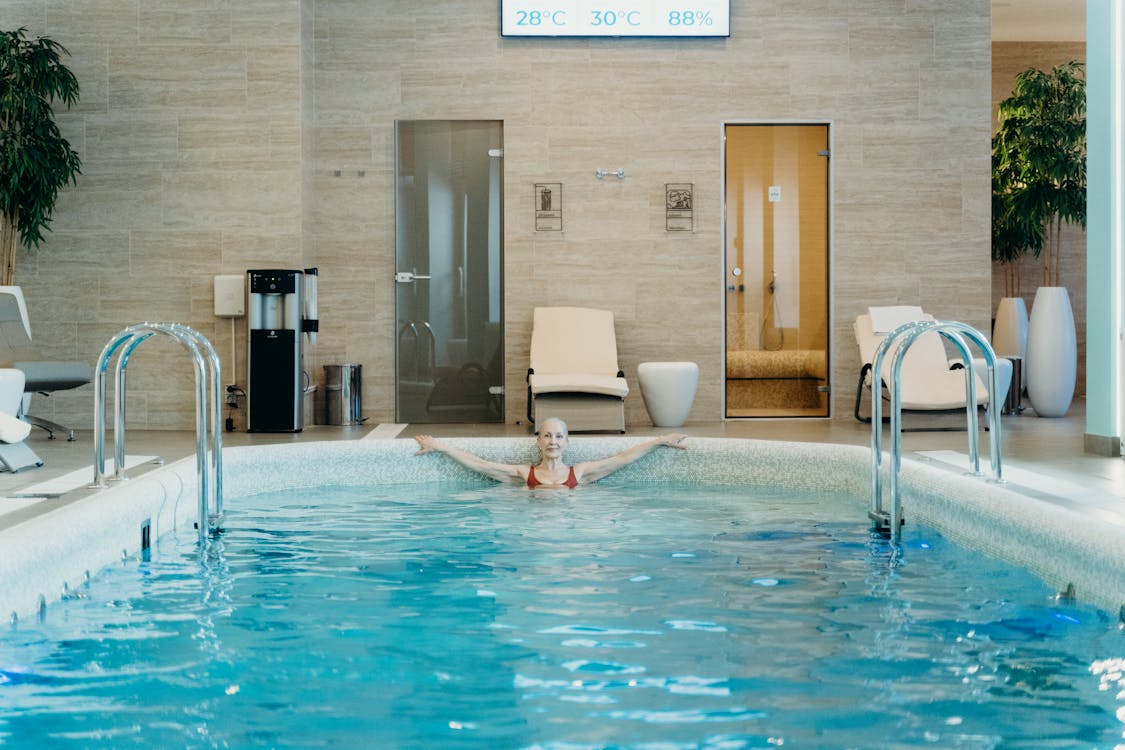In the leisure and hospitality industries, a well-designed commercial pool may be an invaluable asset. It serves as a healing sanctuary for visitors while also enhancing the area’s aesthetic appeal.
But building one involves much more than just excavating a hole and adding water. A variety of aspects need to be carefully considered in order to guarantee long-lasting appeal, safety, and functionality.
Let’s explore the design factors you should consider while creating a commercial swimming pool, ranging from location and space to building codes and pool care.
1. Evaluate Your Space and Location
Consider your location and available space before focusing on aesthetics. It lays the groundwork for the process of designing a pool. In this case, size is important, but so is orientation with respect to solar exposure, the direction of the predominant winds, and the distance from existing structures or facilities.
Keep in mind that extra space may be needed to accommodate change facilities, seating places, or perhaps a bar by the pool.
Don’t ignore any difficulties related to accessibility and terrain conditions either; these will have a big influence on building logistics.
Whether you have a spacious hotel courtyard or a compact indoor facility, understanding your space will help determine the pool’s size, shape, and potential for additional features like waterfalls or fountains. This initial assessment lays the foundation for the entire design process.
2. Understand Building Codes and Regulations
Understanding local building laws and regulations is another important and beginning stage. Among other things, they contain regulations about depths, fencing, pool barriers, signs, water quality, and noise levels.
Adhering to the law is important since it can prevent penalties or needless reconstruction in the future.
This could be greatly aided by looking into local code requirements or by working with an expert who is knowledgeable about the legal aspects of designing commercial pools.
Working closely with a commercial pool builder experienced in municipal and aquatic facility projects will help ensure your pool meets all the necessary legal requirements, safeguarding your patrons and your business.
3. Select Appropriate Pool Materials

Image Source: Cottonbro studio from pexels.com
Consider both durability and attractiveness while choosing pool materials. Concrete, vinyl, and fiberglass are the most popular options; each has advantages of its own.
Concrete demands more upkeep but offers greater design freedom. Fiberglass has a smooth surface and is long-lasting, but vinyl liners are less expensive but may eventually need to be replaced.
Your business pool’s long-term functionality and aesthetic appeal should be taken into consideration while making your choice, in addition to your budget.
4. Prioritize Safety Measures
When creating a commercial swimming pool, safety is of utmost importance. This covers its operational procedures as well as its architectural infrastructure.
Ensure the pool deck design has a slip-resistant surface, and consider the installation of handrails, ladders, and clear markings indicating depth changes. Think about proper lighting to increase visibility for nighttime swims.
In addition to physical safety measures, routine checks must be in place to maintain optimal water purity and clarity.
5. Consider Hiring an Expert Pool Builder
It can be intimidating to take on a commercial pool project. Therefore, working with a professional commercial pool builder could alter everything.
During the planning stage, a skilled commercial pool builder is a valuable resource. They can assist you in comprehending the particular needs of commercial pool design, such as diving, lap, and competition pools.
Because of their experience and knowledge, they can easily handle complicated building codes and realize your vision while maintaining lifespan and safety as the top priorities.
This approach leaves less room for error and saves you from future headaches. Remember that having a professional by your side enhances overall project efficiency and outcome.
Their expertise ensures that the pool facilities you create are not only safe but also adaptable to a wide range of aquatic activities.
6. Designate Zones for Different Activities

Image Source: Donald Tong from pexels.com
A commercial pool’s swimming area alone is insufficient. You need diverse zones to accommodate different tastes, such shallow areas for kid-friendly pools, deeper areas for diving, and swim lanes for intense exercises.
Think of adding cabanas or cozy lounge chairs around the pool so that visitors may relax after a cool swim.
Your commercial swimming pool will stand out from the others in the league thanks to this kind of well-considered design, which maximizes space utilization and improves user experience.
Incorporating a swim-up bar or spa area can enhance the overall experience, allowing your commercial pool to serve a broader range of customer needs. Also, including additional features like water parks, slides, and interactive water features can enhance the overall enjoyment and recreational experience for visitors of all ages.
7. Contemplate Added Features: Waterfalls, Lighting etc.
A vast body of water is only one aspect of a commercial pool. Your pool’s appeal can be greatly increased and a tropical or resort-like environment can be created by adding elements like waterfalls, underwater lights, swim-up bars, or even a lazy river.
While water elements like a waterfall or fountain make it visually appealing and welcoming, lights set the perfect scene for night swims.
Keep in mind that these small touches can have a significant impact on establishing a swimming environment that is appealing and will help you stand out from the competition.
8. Factor in Maintenance Needs and Costs of Commercial Swimming Pools
Lastly, keep in consideration the expenses and upkeep requirements of the commercial pool you are creating. Typical duties include routine cleaning, equipment maintenance, filter changes, and water quality inspections.
By taking these factors into account during the design phase, you may create reliable systems that will be simple to maintain later. Your selection of materials may also affect the cost of future repairs or replacements.
A well-maintained pool not only radiates cleanliness but also provides a safer environment for your guests. So, do factor in running costs, such as electricity costs of a pool pump, to ensure seamless long-term operation.
It’s no easy task to design a commercial swimming pool. It necessitates careful planning and deliberate decisions about many factors, as you have seen. A beautiful, long-lasting, and highly appealing aquatic hub that visitors will like can be created by integrating these factors into your project.
Conclusion
In order to satisfy the various needs of its consumers, a commercial swimming pool must be carefully planned and designed. The success of any establishment, be it a hotel, fitness center, water park, or community club, can be greatly influenced by the design of its commercial swimming pool.
By assessing the available space, putting safety first, and adding eye-catching elements, a well-designed commercial pool can become the center of attention and promote leisure, enjoyment, and entertainment for everyone. The secret to building a public swimming pool that exceeds expectations and thrives is working with skilled pool designers and builders and having a comprehensive understanding of the particular needs of your aquatic design.
Featured Image Source: Adrienn from pexels.com













